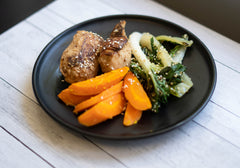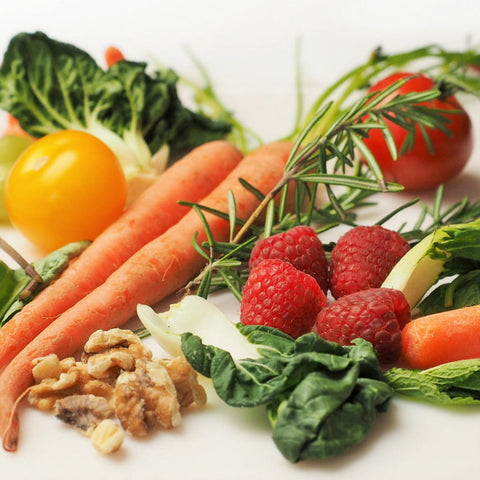Low FODMAP diet- what is it and who is it for?
What are FODMAPs?
FODMAP stands for Fermentable Oligosaccharides, Disaccharides, Monosaccharides and Polyols, which are essentially a "family" of carbohydrates.
They are found in a variety of different foods in differing amounts. Foods high in FODMAPs include garlic, onions, kidney beans, mange tout, peas, apples, apricot, peaches, raisins, plums, avocado, wheat containing bread, cereal and pasta, barley, rye, spelt, cashews, pistachio, cow milk, goat milk, sheep milk, soy milk, yoghurt, cream cheese. (This is not an exclusive list).
Not all experts quote the same Low FODMAP lists so it can be confusing for some. We typically refer to the Monash university as a resource for our list of low and high FODMAP ingredients.
Why do some people avoid them?
Some people find it difficult to digest these types of carbohydrates, and eating foods containing these may lead them to experience symptoms like bloating, gas, constipation or diarrhea or essentially a group of symptoms often referred to as Irritable Bowel Syndrome (IBS).
People who suffer with IBS often find relief in avoiding some foods containing FODMAPs.
How does it work?
Usually people can tolerate low amounts of FODMAPs or can tolerate certain foods better than others. It is usually not necessary to exclude all FODMAPs which is why it is called a Low FODMAP diet.
For example, while beans are generally not tolerated, small to moderate amounts of canned, rinsed chickpeas are generally tolerated because the galacto oligosaccharides usually are leached into the water so the remaining chickpeas once rinsed are usually fairly low in them.
Garlic infused olive oil is well tolerated but whole garlic is not. The flavour and the oil is low in the FODMAPs as the carbohydrate is in the garlic itself.
Wholesomeness is proud to be one of the first and only providers of Low FODMAP meals cooked, packaged and delivered to your door.
Click Here to Start Your Meal Selection





